- Home
- John Jakes
The Bold Frontier Page 2
The Bold Frontier Read online
Page 2
During the early years of his career, when his primary markets were the pulps, Jakes wrote what has become known as the “traditional” Western story. His more recent Western fiction tends toward the nontraditional, offbeat, historical tale.
In “Carolina Warpath,” written especially for this collection, Jakes not only transports the reader to a wholly different “western” frontier—the British Carolina colony a half-century before the American Revolution—but introduces a hero as memorable as Natty Bumppo: Nick Bray. Bray’s up-country expedition, with his bulldog Worthless and his sidekick Huger Noggins, to rescue the woman he loves in the midst of hostile Yamassee country, is a tale reminiscent of James Fenimore Cooper.
In “Dutchman” the time is 1917, when America has gone to war against Germany, and the story is a melancholy reminder of how blind hatred can transform ordinary people into something quite unordinary. In “Shootout at White Pass” Jakes takes us to the California Sierras and introduces us to a sheriff who dreams of retiring to Florida—if he survives a confrontation with a notorious outlaw who has come to town. The title, situation, and characters of this story all seem quite traditional, lacking only a High Noon-type shootout at the end. There is in fact a shootout, but it is nontraditional and pure John Jakes.
Also nontraditional and Jakesian are “A Duel of Magicians” and “Little Phil and the Daughter of Joy.” The former, a self-contained excerpt from Heaven and Hell, tells of a search across the great southwestern plains for the abducted son of a white man and of a confrontation between a Cheyenne medicine man and a black “saloon magician.” The latter story, which appeared under Jakes’s pseudonym John Lee Gray in the first volume of an anthology of original Western stories, New Frontiers, is a wry and good-humored tale of a “soiled dove” named Jimmy, her determined plan to do away with Major General Philip Sheridan, and the heroic efforts of a cavalry scout to deter her.
Even in his traditional stories Jakes gives his readers something more than stock characters and plots. A rare locale, for instance, such as the Sierra Nevada, also the scene of “To the Last Bullet” (New Western, May 1953). Note the similarities in plot as well as locale between this story and “Shootout at White Pass”: both are about lawmen of a rather unheroic sort doing their duty in little mountain mining towns. Written forty years apart, these two stories demonstrate the maturation of Jakes as a writer and how the same basic fictional material can be turned to traditional and nontraditional ends.
Clever little surprises and imaginative situations distinguish all the other stories in this book.
In “The Woman at Apache Wells” (Max Brand’s Western Magazine, September 1952), a woman named Lola saves Tracy, an ex-Confederate soldier, from a bitter life of outlawry.
In “Hell on the High Iron” (Big-Book Western, March 1953), troubleshooter Mark Rome employs some unusual methods to overcome local opposition to the building of a railroad across frontier Kansas.
In “Death Rides Here!” (10-Story Western, October 1953), freighter Jeff Croydon fights to obtain a contract to ship barrels of Oklahoma crude oil.
“The Winning of Poker Alice” (Complete Western Book, February 1953), one of three short fillers based on fact and written by Jakes on assignment, poses a question about who is courting whom in the case of gentleman gambler W. G. Tubbs and Poker Alice Duffield.
In “The Tinhorn Fills His Hand” (10-Story Western, June 1953), gambler Graham Coldfield finds himself in a brace of deadly struggles against illness and a “disease of greed” on the steamboat River Queen.
And in “The Naked Gun” (Short Stories, January 1957), a little girl named Emma puts an end to the career of mankiller George Bodie.
“I have always had a great love of the Western experience in America,” John Jakes has written, “and I have researched and written about it all my writing life. That love for the West and the Western story has not diminished in the forty years I have been writing professionally. The West and the spirit of the West will always haunt me and I will always write about it.”
This collection provides the best introduction to that Western haunting of John Jakes.
The Western; and How We Got It
But westward, look, the land is bright.
—ARTHUR HUGH CLOUGH
THE WORD WEST IS central to American reality and myth. But west is a chameleon. Sometimes it means a geographic region, sometimes a direction, or then again, a period of time in our national experience.
But however it’s used, it brings with it a whole trove of secondary meanings. They speak an alluring language of hope; adventure; riches; escape; beginning again.
The sense of renewal and rebirth contained in west goes far back, to Europe and beyond. Thoreau speculated that “the island of Atlantis, and the islands and gardens of the Hesperides, a sort of terrestrial paradise, appear to have been the Great West of the ancients, enveloped in mystery and poetry.” Even when the wealth of the Orient, imaginary and real, drew European explorers in that direction, the better, faster route was imagined to lie the other way, and for years, mariners tried to find this fabled western passage.
But it was a series of events on the North American continent in the nineteenth century that gave the word its final form and densely interlocked meanings:
West—the way you go to reach the unpopulated country. The gold. Free land. Breathing room.
West—where the buffalo roam. A vast space beyond the Mississippi.
And West—a period of time, of roughly thirty-five to forty years’ duration—say, from the strike at Sutter’s Mill to the massacre at Wounded Knee. Often, this time frame is called the “Old West,” a common shorthand for the years encompassing the final explosive thrust of the United States population, native and foreign-born alike, into and through all the empty lands from the Old Northwest to the Pacific.
Some would argue that the “Old West” is better defined by fixing its limits at either end of the heyday of the cowboy—a span much shorter than the first one; only a decade or so. There is something to that argument since, in large parts of the world, the American West is definitely not the sodbuster or the railroader, the owner of the Blue Hotel or the young reporter on the Territorial Enterprise. The West is the cowboy, and vice versa, period.
No matter what time period you choose for your definition, one thing’s clear. America took west and put its own brand on it. Frederick Jackson Turner saw that. In Europe, he observed, the “frontier” was traditionally the boundary, clearly defined and often fortified, between countries; there could be hundreds of thousands of people living settled lives along this kind of frontier.
Eighteenth- and nineteenth-century Americans, on the other hand, transformed the meaning of frontier to the edge of settlement, which was sparsely populated and slowly but steadily moving as more people approached.
And if you wanted to know where to find this moving border of civilization, you generally looked west.
The popularity of literature about the West isn’t hard to explain. From the earliest European voyages of exploration, accounts of the beauties and perils of remote, exotic lands have exerted a strong appeal on readers. Although some men and women always go out to the unexplored places, wherever those happen to be, a lot more stay safely at home, preferring to do their traveling vicariously.
There you have the reason for the success of The principall Navigations, Voiages and Discoveries of the English Nation, as chronicled in three volumes by Richard Hakluyt, the geographer. You understand why people savored the journals and diaries of the epochal Lewis and Clark expedition. Or rushed to buy all the guidebooks to the California gold fields (frequently written by men who had never seen them).
But we’re dealing here not with advice to the gold-seeker, or descriptions of the flora of what would turn into the states of the Pacific Northwest. We’re talking fiction. “The Western,” to use a familiar name. Europeans and others have written them, but as a genre, Americans invented them.
The We
stern was, in its first life, an Eastern. Although part of our frontier almost always lay to the west—the far reaches of Virginia; the more remote and legendary Kentucky—for a while other parts lay down in the Carolinas, or up in the forests of New York. Western authors owe an immense debt to the authors of “Easterns”—Fenimore Cooper and all his literary kin, including his now largely forgotten colleague from the South, William Gilmore Simms. During the antebellum period, Simms’s historical frontier novels were nearly as popular as Cooper’s had been. But he was a South Carolinian, and bullheaded in his defense of slavery. That and the Civil War eroded his popularity and thrust him into obscurity.
Neither Cooper nor Simms wrote the kind of fiction this book contains. They are its grandfathers, certainly. But who are the parents? And how did the offspring get to be so universally beloved?
Some of the reasons have already been suggested. The materials and background of the Western have an instantaneous appeal. They are colorful; exciting. And, as noted, nineteenth-century stay-at-homes were wildly curious about the country’s far reaches, to which increasing numbers of their fellow citizens were rushing in search of precious metal, farmland or freedom from pursuit by law officers, wives or cuckolded husbands. People who didn’t go wanted to know what it was really like out there where the sirens sang the song of manifest destiny.
So the moment was ripe for the appearance of a new kind of fiction. I would argue that three forces in nineteenth-century popular culture propelled the Western to national, then global acclaim:
The debut of the dime novel.
The fiction of Ned Buntline.
And the life of Buffalo Bill Cody.
The earliest dime novels were created in the tradition of Cooper, Simms and Sir Walter Scott. Their authors wrote of the frontier, all right, but in a manner that made at least some pretense of literary quality.
The very first of them was one of those “Easterns.” Malaeska: The Indian Wife of the White Hunter was published in June, 1860, by the firm of Beadle and Company of William Street, New York. The work carried impeccable credentials. It had already appeared as a prize story in a magazine called The Ladies’ Companion.
Edmund Pearson’s entertaining study of dime novels gives us this description of the first offering from Beadle: “… a thin little book, of one hundred and twenty-eight pages … about six-inches-high and four-inches-broad … the covers were of saffron paper—the book was a ‘yellow-backed Beadle.’ ”
The term quickly became pejorative, which Mr. Beadle resented; he also insisted his covers were orange. Whatever the hue, Beadle books went to war in many a military haversack. The soldiers couldn’t get enough of them. So it wasn’t long before a picture of a ten-cent piece was printed on every cover to foil Army sutlers, notorious price-gougers.
The all but unpronounceable Malaeska is a Cooperish frontier romance set in the Hudson River Valley in the 1700s. It opens gently—a stylistic refinement which other Beadle authors would soon demolish:
The traveller who has stopped at Catskill, on his way up the Hudson, will remember that a creek of no insignificant breadth washes one side of the village …
The reader must wait until the second chapter to encounter the woodsman-hero, Danforth, and a fight featuring feverish dangers as well as feverish prose:
Sternly arose the white man’s shout amid the blazing of guns and the whizzing of tomahawks, as they flashed through the air on their message of blood … Oh, it was fearful, that scene of slaughter. Heart to heart, and muzzle to muzzle, the white man and the red man battled in horrid strife.
The author of this stirring stuff was no obscure hack, but an accomplished and well-regarded magazine editor {Graham’s, The Ladies’ World, etc.) and the creator of some eminently respectable novels (“…published at the conventional price of one dollar and fifty cents, and bound, decorously, in boards”). She ran a fashionable New York salon, and received “marked attentions” from the likes of Thackeray and Dickens during an 1850 world tour. Her name was Mrs. Ann Sophia Winterbotham Stephens. She was deemed, correctly, a pillar of propriety.
Yet she did create the first work presented in a new and lusty fiction format; one which would serve as the earliest popular vehicle for Western stories.
Relatively soon, the dime novel would become—to busybody clerics, narrow-minded parents and other spoilsports—what Pearson delightfully terms “a literary pestilence.” The objection was usually moralistic. Lack of quality would have been a better target. As the dime novel grew, expanding its scope to deal with all sorts of subjects and introducing series characters who solved mysteries, invented fabulous electric boats or lettered in every sport ever conceived by God or man at Yale, the writing became a lot more punchy. A typical opening instantly removed any doubt as to whether this was, or was not, a tale of derring-do:
Bang!
Bang!
Bang!
Three shots rang out on the midnight air!
I guess we can agree that it isn’t your average literary prize-winning diction. But it surely gets the blood going (!!!).
The dignity and talent which a few writers such as Mrs. Stephens brought to the form were cake-icing that rapidly disappeared. But the stage was set; a means was at hand to make exciting fiction, including tales of the West, affordable and widely available.
Enter the bizarre Edward Zane Carroll Judson, alias Ned Buntline.
No author would dare invent Ned Buntline; his manuscript would be rejected as too outrageous.
“Colonel” E. Z. C. Judson was a short, stocky, slightly lame man of quick wit and tongue. He was a propagandist without peer, in print or in front of a mob. He instigated the bloody Astor Place Riot in 1849 to protest the presence on a New York stage of a famous Shakespearean actor from Britain (it robbed America’s premier thespian, Forrest, of the chance to work, Judson claimed).
In the same generous vein, Judson helped organize the American Political Party, or “Know-Nothings,” who stood foursquare against anything and anyone not white, Protestant and native-born.
Judson served two-and-a-half years with the First New York Mounted Rifles during the Civil War. He saw no battle action, but he did see the interior of a cell in which he was placed for deserting. Over the years he had up to half a dozen wives (the records of his marriages and divorce settlements are confused), and was a bigamist at least once.
Using the Buntline pseudonym, he became an author of sensational fiction: sea stories, and adventures set in the Seminole and Mexican Wars. The firms of Beadle and Street and Smith published his material. One biographer unequivocally calls him “America’s best-paid writer” during his prime years (the annual income cited in support of this claim is twenty thousand dollars).
In the summer of 1860, Buntline/Judson heard or read of a hot skirmish between Indians and cavalry at Summit Springs, Nebraska. Sioux and Cheyenne under Chief Tall Bull had been pursued by General Eugene Carr’s 5th Cavalry, aided by the irregulars in Major Frank North’s Pawnee scout battalion. Bunt-line boarded the westbound cars to see whether there might be fresh story material in it.
He hoped to interview North, the man who had reportedly killed Tall Bull. He tracked the scout to a military post, but North apparently had no wish to become grist for the fiction mill: “If you want a man to fill that bill, he’s over there under the wagon.”
The man snoozing in the shade was a frontier-wise young fellow, born in Iowa and revealed as tall when he stood up. One source characterizes him as “handsome as Apollo.” William Frederick Cody was a veteran of the Union army, a hunter and a supplier of buffalo meat to railroad construction crews.
Although not actually present at the battle of Summit Springs—he had been on a scouting assignment for General Carr—he arrived at the Indian village soon after the engagement. He was sufficiently charmed by Mr. Buntline so that he was willing to discuss the experience.
Cody, already nicknamed Buffalo Bill by his friends, suggested they go out looking for
Indians. Buntline abandoned his previously announced plan to give a temperance address (it was another way he made money; he also had a stock lecture on the subject of “Woman As Angel and Fiend,” a topic he seems to have researched in some depth). Off they rode, the scout and the fiction writer, talking a blue streak. Buntline described his heroic exploits in the Seminole, Mexican and Civil Wars. Presumably the young and likable Cody was more truthful.
At the end of the research trip, Buntline went back to New York City and to work. He had seen no Indians except maybe a few hanging around the post. But he’d heard enough stories from Cody and other scouts and soldiers to send the kettle of his imagination to full boil. In December of that year, Street and Smith proudly announced a new Buntline story: Buffalo Bill—The King of Border Men.
The archetype of the Western hero was about to burst on the world. A young plainsman with a sense of humor, a liking for spirits (he often said that when he volunteered for the war, he was so drunk he didn’t know what he was doing) and a God-given gift for showmanship, he was about to begin his journey to fame. As he went, he would carry and spread the legend of the West far beyond the shores of his own country.
The Buntline story portrayed Bill Cody not only as the greatest scout in the West, but as a staunch cold water army man, a teetotaler. Well, no law requires that the truth be told by, or about, living people, as numerous memoirs of movie stars and ex-presidents demonstrate.
Don Russell’s life of Cody disputes many claims of Buntline’s chief biographer, as well as subsequent exaggerations of Buffalo Bill’s early career. (One has the scout simultaneously shooting Tall Bull, tipping his sombrero respectfully to the chief’s white female captive, and holding the reins—”presumably with his third hand.”) Russell also questions the extent and value of Cody’s contribution to the Street and Smith story; he claims most of it was actually based on the adventures of another frontiersman, James Butler Hickok, and that all Buntline really got out of his meeting with the young Iowan was “the alliterative magic of the name Buffalo Bill.”

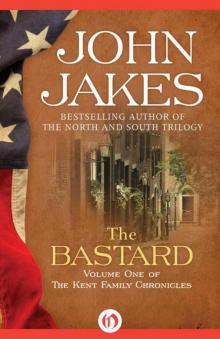 The Bastard
The Bastard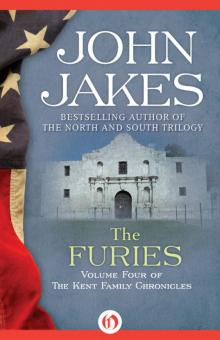 The Furies
The Furies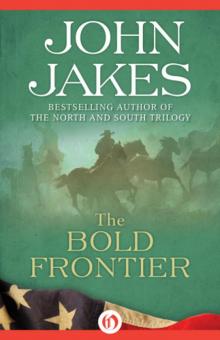 The Bold Frontier
The Bold Frontier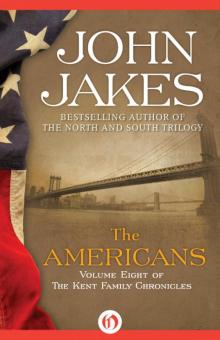 The Americans
The Americans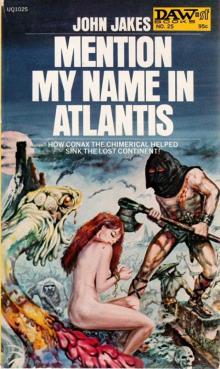 Mention My Name in Atlantis
Mention My Name in Atlantis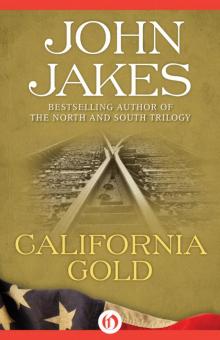 California Gold
California Gold North and South
North and South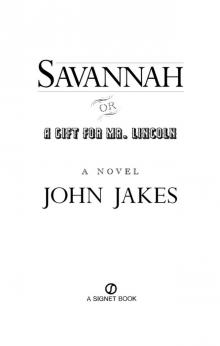 Savannah, or a Gift for Mr. Lincoln
Savannah, or a Gift for Mr. Lincoln Heaven and Hell
Heaven and Hell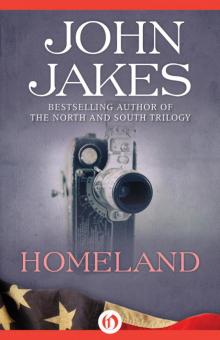 Homeland
Homeland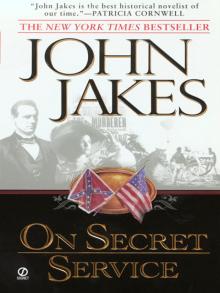 On Secret Service
On Secret Service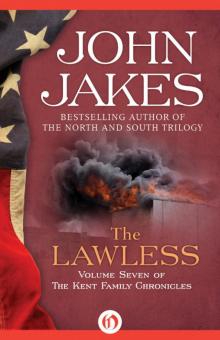 The Lawless
The Lawless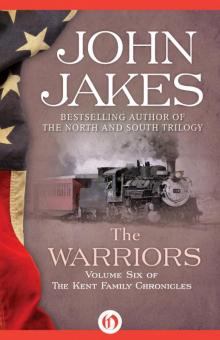 The Titans
The Titans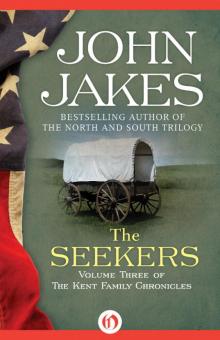 The Seekers
The Seekers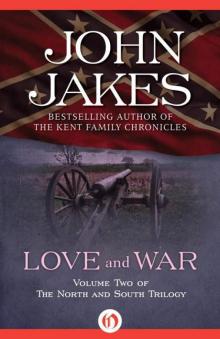 Love and War
Love and War North and South: The North and South Trilogy (Book One)
North and South: The North and South Trilogy (Book One)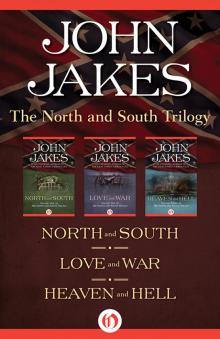 North and South Trilogy
North and South Trilogy Love and War: The North and South Trilogy
Love and War: The North and South Trilogy North and South: The North and South Trilogy
North and South: The North and South Trilogy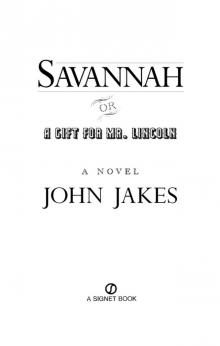 Savannah
Savannah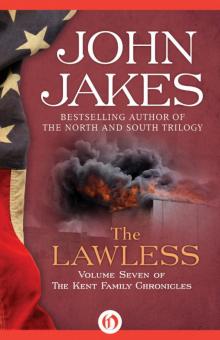 Lawless
Lawless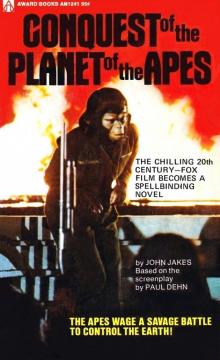 Conquest Of The Planet Of The Apes
Conquest Of The Planet Of The Apes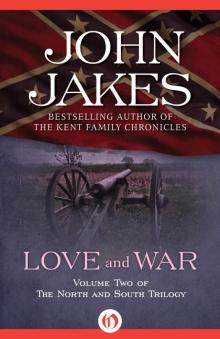 Love and War: The North and South Trilogy (Book Two)
Love and War: The North and South Trilogy (Book Two) The Rebels: The Kent Family Chronicles
The Rebels: The Kent Family Chronicles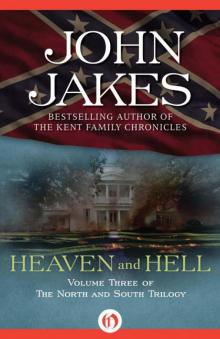 Heaven and Hell: The North and South Trilogy
Heaven and Hell: The North and South Trilogy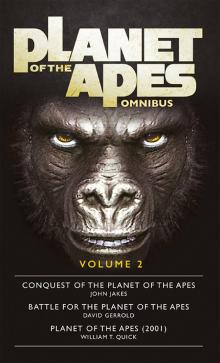 Planet of the Apes Omnibus 2
Planet of the Apes Omnibus 2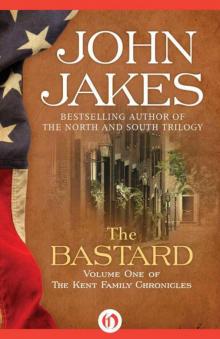 The Bastard: The Kent Family Chronicles
The Bastard: The Kent Family Chronicles Heaven and Hell: The North and South Trilogy (Book Three)
Heaven and Hell: The North and South Trilogy (Book Three)